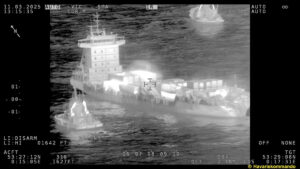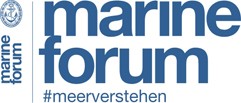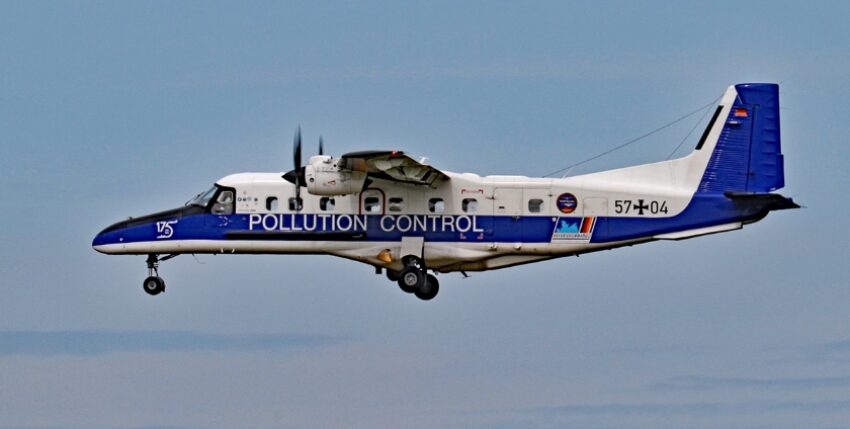In connection with the collision of a freighter and a tanker off the British coast on 10 March, the naval aviators of Naval Air Wing 3 "Graf Zeppelin" provided valuable administrative assistance with a Dornier DO 228 LM.
The operation was carried out on behalf of the Central Command for Maritime Emergencies, which offered rapid assistance to the UK Coastguard immediately after the collision became known on the morning of 10 March. The container ship SOLONG and the tanker STENA IMMACULATE collided off the British North Sea coast. Both ships caught fire and there was a risk that leaking oil and any containers falling into the water could lead to further hazards and environmental pollution.

at the shipwrecked Solong, Photo: Havariekommando
Two days in action
After the UK Coastguard had accepted the Havariekommando's offer to provide a surveillance aircraft on the morning of 11 March, the mission began. At around 12.30 p.m., one of the two Dornier DO 228 oil spill surveillance aircraft of the CCME took off from Nordholz Naval Air Base and arrived in the affected sea area of the British North Sea coast after a flight time of around two hours, where it then immediately carried out its first surveillance flights. According to the flight radar website FLIGHTRADAR, the aircraft used was a DO 228-212 LM with the registration 57+04. The aircraft, equipped with various sensors, operated from Humberside airfield in North Lincolnshire until the afternoon of the following day, providing a large number of high-resolution images of the damaged aircraft. In this way, the German crew supported the crews of the British surveillance aircraft with their sensor aircraft and provided valuable information on the situation. On the evening of 12 March, the 57+04 arrived back at the naval air base in Nordholz at the end of the mission.
Working for environmental protection
The Naval Air Wing 3 "Graf Zeppelin" stationed in Nordholz, Lower Saxony, operates two Dornier DO228s on behalf of the Havariekommando to monitor marine pollution. In addition to the aforementioned DO 228-212 LM (57+04), a DO 228 NG (57+05) is also used. Both sensor aircraft have highly sensitive technical equipment. With radar, infrared and ultraviolet sensors as well as microwave radiometers, fluorescence lasers and video cameras, the turboprop aircraft can detect any pollution on the water surface from the air, day or night. The data obtained is transmitted directly and immediately to the emergency services. Whether as part of oil monitoring or in the event of accidents at sea, the two surveillance aircraft can provide the Central Command for Maritime Emergencies with valuable information at any time. Last year, the two DO 228 oil reconnaissance aircraft carried out 407 missions with more than 1,000 flight hours over the North Sea and Baltic Sea as part of environmental monitoring. In the process, 43 pollution incidents were identified in German territorial waters and in the Exclusive Economic Zones (EEZ) of the North Sea and Baltic Sea - 33 of them in the North Sea and 10 in the Baltic Sea. In addition, 58 further contaminants were found outside German waters and routinely passed on to the competent authorities. These were located in sea areas in the Netherlands, Denmark, Great Britain, Poland and Sweden, according to the Central Command for Maritime Emergencies in its recently published annual report 2024 on oil monitoring.
Carsten Vennemann










